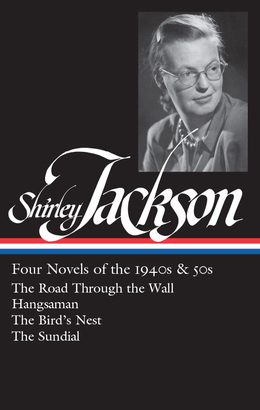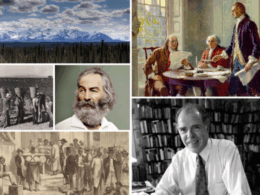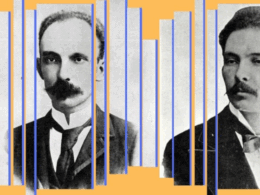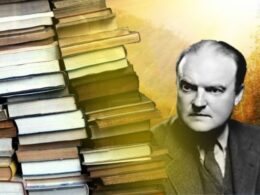This month Library of America publishes Shirley Jackson: Four Novels of the 1940s & 50s, a companion to the first collection of Jackson’s writings released in 2010. In the following guest post, the new volume’s editor, Ruth Franklin, reflects on the shifts in Jackson’s literary reputation, as well as her heightened visibility in popular culture, in the decade since then.
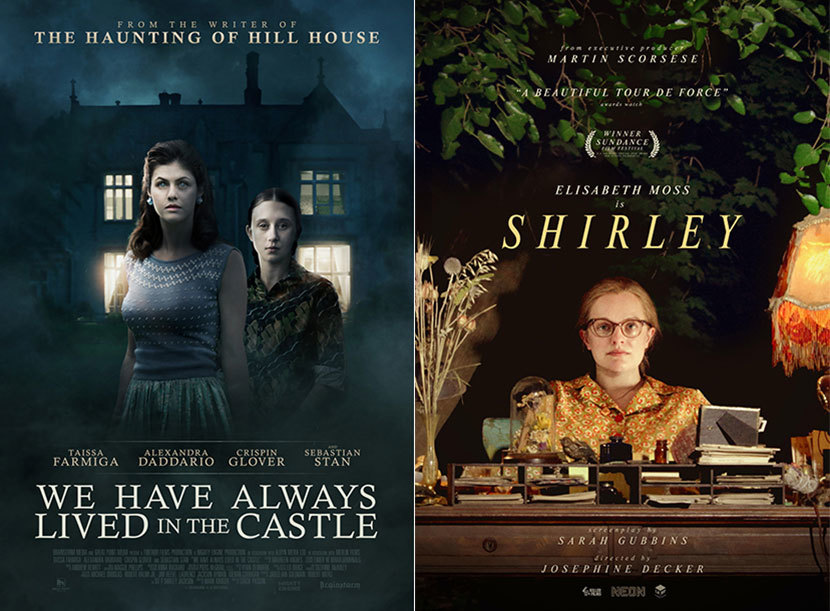
Ten years ago last spring, I was an editor on the books and arts section of The New Republic when the first Library of America anthology of Shirley Jackson’s work landed on my desk. My responsibilities included writing a biweekly column about culture, and the book struck me as the perfect peg for a meditation on Jackson and horror. Ever since I first read it as a teenager, The Haunting of Hill House, included in that volume, has been one of my favorite novels, the one to which I compare every other ghost story. Jackson’s achievement in that book—which few other horror writers even approach—is a profound investigation of fear itself: how and why it works on us the way it does, and what the things we fear tell us about who we are.
The protagonist of Hill House is a young woman. Still, as I turned the pages of the anthology, I was astonished by how female-centric Jackson’s fiction was. In story after story—that volume includes her first collection, The Lottery: Or, the Adventures of James Harris, as well as a selection of other stories curated wisely by Joyce Carol Oates—I read of the lives of women in the 1940s and 1950s: working girls a few years past their prime and still unmarried; mothers stuck at home with their children, longing for company but terrified of the neighbors’ gossip. Nearly a generation before Betty Friedan cleared the way for second-wave feminism with The Feminine Mystique, Jackson’s stories explored the claustrophobia that can accompany marriage and the desperation to which it drove women. The themes of her work were so central to the preoccupations of American women during the postwar period that one writer later referred to the 1950s as “the decade of Jackson.”
When the anthology appeared, I had a six-year-old son and a four-year-old daughter, and I had recently separated from my husband. Since becoming a mother, I had found myself wrestling with seemingly intractable social and personal pressures to take on an ever-greater share of household responsibilities, and to do so happily. Never mind if I had to postpone my own deadlines while watching my male colleagues continue as they were, even after having children. I loved being a mother, but even as I recognized how much had changed for women over the last fifty years, sometimes I still felt like a midcentury housewife—or as if I were supposed to be one.
The collection included a few of the autobiographical essays Jackson published in women’s magazines, which she would eventually compile into two best-selling memoirs. In one of these, “The Third Baby’s the Easiest,” a clerk asks for Jackson’s occupation as she arrives at the hospital to deliver her third child. “Writer,” she answers. “I’ll just put down housewife,” the clerk tells her. I read those lines and something ignited in my brain. More than anything else, it was the knowledge that Shirley Jackson had written her incisive, probing, sinister works of fiction while also waging war against the expectations of her era that made me want to tell her story.
An editor gave my piece the title “I’m Sorry, Ms. Jackson,” a reference to a hip-hop song that puzzled me at the time. But Jackson did deserve an apology—from the critics of her era, who (I would learn) often misunderstood or dismissed her; from an academic literary establishment that had all but ignored her; from the publishers who had let so much of her writing go out of print. And from readers like myself, captivated by the chills of “The Lottery” and _Hill House but never bothering to probe more deeply into her body of work.
I spent the next five years immersing myself in Jackson’s world: reading through her archive at the Library of Congress, spending time with her children, interviewing anyone I could find who had crossed paths with her. As I did, I started to notice that other people were becoming aware of Shirley Jackson too. Her first four novels, which I had gotten hold of via secondhand bookstores, were brought back into print in beautiful new Penguin Classics editions. We Have Always Lived in the Castle, which many readers consider Jackson’s greatest novel, was made into a feature film. Mike Flanagan, one of the most creative new horror directors, adapted The Haunting of Hill House into a ten-part Netflix series that took the book as a jumping-off point for a completely new story about a family scarred by tragedy. This year saw Elisabeth Moss starring as Jackson in the film Shirley, which tells a fictional story about Jackson’s life during her writing of Hangsaman, adapted from Susan Scarf Merrell’s 2014 novel.
Over the years, many people have asked me what made the conditions right for this “Shirley Jackson renaissance,” as it’s been called. Some of it, I think, was simply practical. The buzz around my biography-in-process helped spur Penguin to reprint the neglected early novels, bringing those works to a generation of readers who (like myself) may never have come upon them. The attention that my book received heightened Jackson’s visibility in popular media. By fall 2018, when the posters for Flanagan’s Haunting of Hill House were plastered on just about every New York City bus stop, everyone seemed to have heard of Jackson, even if their experience with her work was limited to a high school reading of “The Lottery”—still one of the most-anthologized works of American fiction.
But the last decade has also seen a drive to reassess canons, in the literary world and elsewhere. In 2010, the feminist organization VIDA published its first tally of bylines in major book review publications, calculating the gender breakdown of authors reviewed and book reviewers published in Harper’s, The New York Times Book Review, The New York Review of Books, and elsewhere. Known as the “VIDA Count,” this data revealed dramatic disparities at virtually every publication surveyed. At around the same time, widely read articles by Francine Prose and Meg Wolitzer examined myths about the differences between men’s and women’s writing and the way marketing and cover design subtly influence readers’ perceptions of which books to take seriously. No one could plausibly claim any longer that the gulf between the critical reception of fiction by men versus fiction by women was based solely on merit; instead, more and more people began to understand the establishment of literary reputations as a political matter as well as an artistic one.
In response, the field changed. The New York Times Book Review hired a new female editor, and the balance in reviews started to shift. Other publications followed suit: I can’t be the only female book reviewer who noticed an uptick in assignments. The first VIDA Count found that roughly 22 percent of The New Yorker’s book reviewers were women; by 2019, that number had climbed to 36 percent. Meanwhile, the explosion of the #MeToo movement in fall 2017 resulted in several male magazine editors losing their longtime perches, making way for a new cohort more open to a wider variety of writers. Imprints like Emily Books made novels by women their focus, drawing attention to new, often experimental work while reviving neglected books by writers like Eve Babitz and Barbara Comyns. With the rise of the Black Lives Matter movement, the powerful biases that people of color face in the publishing world have come to more prominent attention.
Ten years ago, a reviewer sneered at the idea of Shirley Jackson having a place in the American literary canon. In the current literary landscape, such a reaction is no longer conceivable. Indeed, it would seem crazy to leave her out.
It’s fitting that this new decade of Jackson culminates in the publication of the second Library of America volume of her writing, which formally recognizes her first four novels as essential to American literary history. Harold Ross, the first editor of The New Yorker, predicted that “The Lottery” would become “a classic in some category.” Indeed, Jackson’s fiction resists categorization—perhaps these novels especially. But all of it has now become classic.
Ruth Franklin received the National Book Critics Circle Award in Biography for Shirley Jackson: A Rather Haunted Life (2016). A book critic and frequent contributor to The New Yorker, Harper’s, and other outlets, she is also the author of A Thousand Darknesses: Lies and Truth in Holocaust Fiction (2011).
